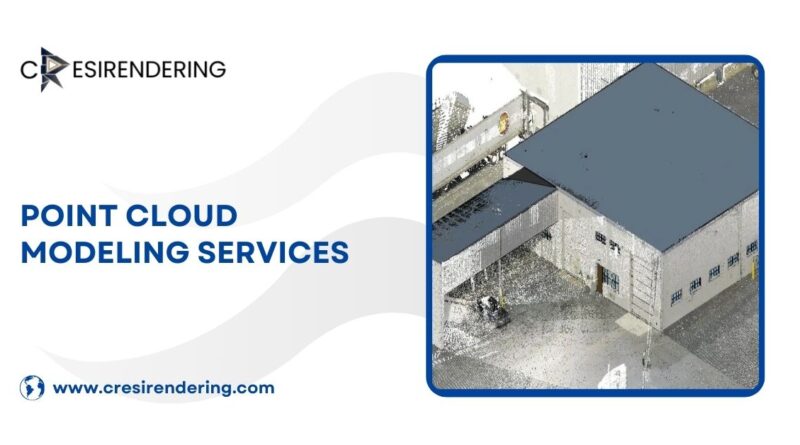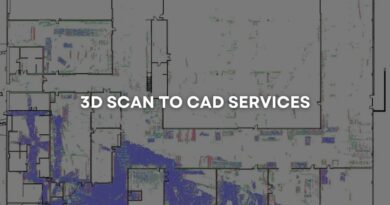The Growing Importance of Point Cloud Modeling Services
In today’s rapidly advancing digital landscape, point cloud modeling services have become increasingly vital for various industries, ranging from architecture and construction to manufacturing and environmental monitoring.
These services, which involve the use of laser scanners or photogrammetry to create detailed 3D representations of real-world objects, structures, and environments, are revolutionizing the way projects are planned, executed, and managed.
This blog post delves into the significance of Point Cloud Modeling Services, their applications, and the benefits they offer to businesses.
Understanding Point Cloud Modeling
Point cloud modeling is the process of capturing spatial data using advanced scanning technologies, such as LiDAR (Light Detection and Ranging) or 3D laser scanners.
These devices emit laser beams that bounce off surfaces and return to the sensor, generating millions of data points known as a “point cloud.”
Each point in the cloud represents a specific location in space, capturing details like size, shape, and spatial relationships with high precision.
The point cloud data is then processed using specialized software to create 3D models, which can be used for various purposes, including analysis, visualization, and design.
Unlike traditional 2D drawings or models, point cloud models provide a highly accurate and detailed representation of real-world environments, enabling professionals to make more informed decisions.
Key Applications of Point Cloud Modeling Services
1. Architecture and Construction
In the architecture and construction industry, point cloud modeling is invaluable for creating as-built models, which accurately represent the current state of a building or structure.
These models are essential for renovations, restorations, and retrofitting projects, as they allow architects and engineers to work with precise measurements and avoid potential design conflicts.
Moreover, point cloud models can be integrated with Building Information Modeling (BIM) systems, enhancing collaboration and efficiency throughout the project lifecycle
2. Manufacturing and Industrial Design
Point cloud modeling services are widely used in manufacturing and industrial design for reverse engineering and quality control.
By capturing the exact dimensions of existing products or components, manufacturers can create accurate 3D models for reproduction or improvement.
This process is particularly useful in industries where legacy equipment or parts need to be replicated but lack original design documentation.
3. Heritage Preservation
The preservation of historical sites and cultural heritage is another critical application of point cloud modeling. High-resolution 3D models of monuments, buildings, and archaeological sites can be created to document their current state and monitor changes over time.
This data is invaluable for restoration efforts, as it provides a detailed record of the site’s condition before any intervention. Additionally, these models can be used to create virtual tours, making cultural heritage accessible to a global audience.
4. Environmental Monitoring
Environmental monitoring and management are increasingly relying on point cloud modeling services to capture and analyze complex natural environments.
For instance, LiDAR technology is used to map forests, riverbeds, and coastlines, providing data that helps in assessing environmental changes, planning conservation efforts, and managing natural resources.
Point cloud models also assist in disaster management by offering accurate terrain data for flood modeling and landslide analysis.
Read more: Transform Designs with Structural 3D BIM Modeling Services
Benefits of Point Cloud Modeling Services
1. Accuracy and Precision
One of the most significant advantages of point cloud modeling is the unparalleled accuracy and precision it offers. Traditional surveying methods can be time-consuming and prone to errors, whereas point cloud models provide exact measurements that significantly reduce the margin of error in design and construction projects.
This precision is particularly crucial in industries where even minor deviations can lead to costly mistakes.
2. Time and Cost Efficiency
Point cloud modeling services can drastically reduce the time required for surveying and data collection. What once took days or weeks to measure manually can now be captured in a matter of hours.
This time efficiency translates into cost savings for businesses, as projects can be completed faster and with fewer resources. Additionally, the ability to detect potential issues early in the design phase can prevent expensive rework and delays later in the project.
3. Enhanced Visualization and Communication
The 3D models generated from point clouds offer a level of visualization that 2D drawings simply cannot match. These models can be rotated, zoomed in on, and manipulated in various ways, providing a comprehensive view of the project.
This enhanced visualization is particularly useful for communicating complex designs to stakeholders, who may not have a technical background.
It also facilitates better collaboration among project teams, as everyone can work from the same detailed model.
4. Versatility Across Industries
The versatility of point cloud modeling services makes them applicable across a wide range of industries. Whether it’s for designing a new skyscraper, preserving an ancient temple, or monitoring a forest ecosystem, point cloud models provide the detailed spatial data needed to make informed decisions.
This adaptability ensures that businesses can leverage point cloud modeling for various applications, enhancing their overall operational efficiency.
Conclusion
As technology continues to evolve, the demand for accurate and efficient data capture methods is growing across industries.
Point cloud modeling services stand at the forefront of this technological revolution, offering businesses a powerful tool to capture, analyze, and visualize complex environments with unparalleled precision.
From architecture and construction to environmental monitoring and heritage preservation, the applications of point cloud modeling are vast and varied.
By investing in these services, businesses can improve project outcomes, reduce costs, and stay ahead in an increasingly competitive market.
Also read: Architectural 3D Modeling Services Visions into Reality




